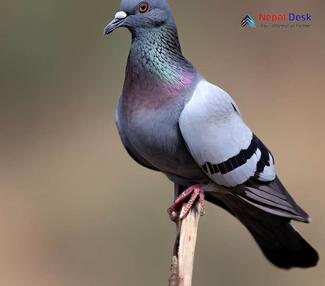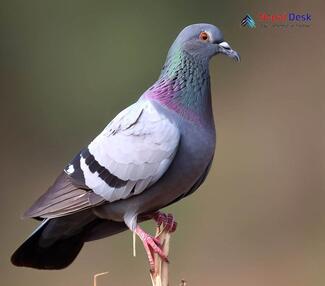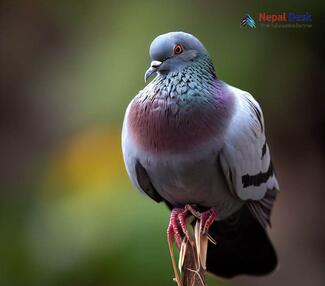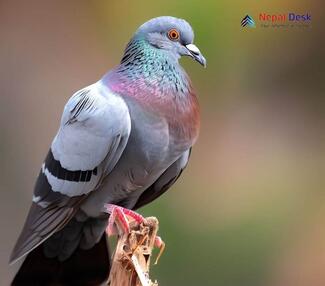Nestled between India and China, the picturesque nation of Nepal boasts a richly diverse ecosystem that's home to numerous avian species. One unique bird that has adapted well to this environment is the Blue Rock Pigeon (Columba livia).
Physical Features of the Blue Rock Pigeon
The Blue Rock Pigeon measures roughly 32-34 cm in length and comes with a distinctively sleek profile. These pigeons possess a bluish-grey head and neck area, complemented by dark wings adorned with two black bands that stand out in flight. A keen eye will also spot iridescent green and purple plumage around their necks.
Habitat and Prey of the Blue Rock Pigeon
Blue Rock Pigeons are highly adaptable creatures inhabiting various environments such as cliffs, rocky mountainsides, and urban areas with tall buildings which emulate their natural habitat. Mostly granivorous (seed-eating) birds, they primarily feast on seeds and grains while occasionally feeding on small insects or scraps from human sources.
Male & Female Characteristics of the Blue Rock Pigeon
Males are known for their enthusiastic courtship rituals where they chase after females while inflating their crop (a part of the alimentary canal) to flaunt shiny feathers. Both genders exhibit similar coloration patterns, making it difficult to distinguish sexes without closely observing behavior or anatomy.
Nesting Habits of the Blue Rock Pigeon
Blue Rock Pigeons prefer constructing their nests within rock crevices or inaccessible ledges to evade potential predators. Materials like hay and twigs are frequently used during nest-building. Pairs mate for life, and females typically lay 1-3 eggs that hatch after 17-19 days of incubation. Upon hatching, both parents take turns feeding their offspring a secretion known as crop milk until the chicks are ready to fledge at around 30 days.
Migration of the Blue Rock Pigeon
The Blue Rock Pigeon does not exhibit any significant migratory behavior, remaining within its home range for most of its life. However, they may occasionally venture out to find new nesting sites or food sources.
Distribution and Spotting of the Blue Rock Pigeon in Nepal
Found throughout Nepal, they are especially widespread in the Kathmandu Valley. If you're on the lookout for these urban dwellers in Nepal, check city centers or areas with prominent rock formations like cliffs. Alternatively, if you happen to visit temples or other popular bird-feeding spots, you may witness Blue Rock Pigeons sharing space with humans.
In conclusion, the Blue Rock Pigeon is a fascinating addition to the diverse avian landscape in Nepal. With a striking appearance and unique adaptability to various habitats, this species particularly deserves acknowledgment as it seamlessly integrates into the backdrop of Nepalese life.




